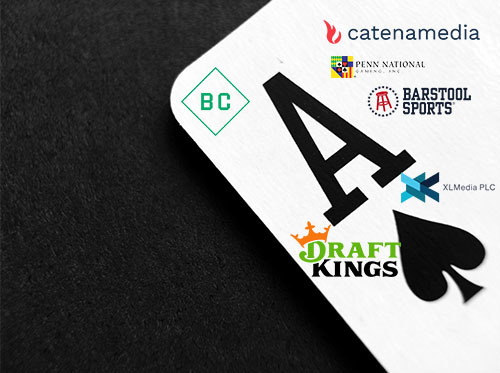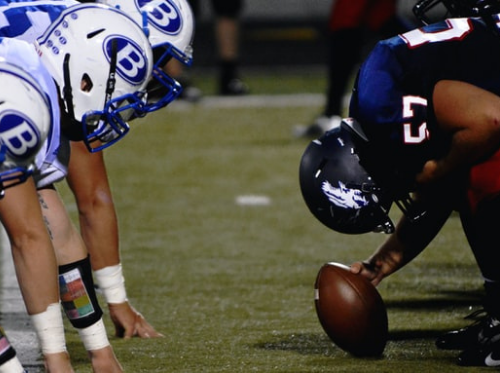Why Only 61% of Gen Z Watches Sports, and How to Future-Proof Sports Media by Unbundling Live Rights
WHAT’S HAPPENING? Traditional Sports Revenue Models are in Jeopardy as Leagues Continue to Lose the Next Generation of Fans
Gen Z is less interested in sports than any prior generation. They can easily access copious amounts of online content and entertainment, and are thus choosing to spend their valuable time elsewhere.
-
A recent survey by Morning Consult found that just 53% of Gen Z respondents identify as sports fans. That’s down from 69% of millennials and 63% of adults overall. A whopping 39% of Gen Z said they never watch sports.
-
73% of teenage Gen Zers watch video on their smartphones and only 33% of them watch cable TV
-
25 million homes have cut the cord since 2012, and another 25 million are expected to do so by 2025. Less than 20% of Gen Z watch cable weekly
-
68% of Gen Z males say that gaming is a core part of their identity and Twitch reported over 1.7 billion total hours watched in October
-
63% of Fortnite players are between 18-24 and 64% of them play for more than 6 hours per week
-
79% of eSports viewers are under 35 years old. For comparison, here are the average audience ages for legacy leagues: MLB = 57, NCAA Basketball and Football = 52, NFL = 50
-
59% of Gen Z’s time watching video is on social media, and only 24% of 12-17 year olds choose TV when they want to “watch something fun”
-
Average TV ratings for NFL games are down 9% versus last year
This erosion of youth audiences is an existential crisis for leagues.
As we’ve previously written about, revenues from live rights are by far the biggest revenue-driver in professional sports — making up 37% of total revenue for the four major sports leagues, including 48% for the NFL. But although leagues currently make most of their live rights revenues from TV deals, Gen Z does not consume traditional TV. Many of them will never pay for a traditional cable subscription. They are not cord cutters, but rather cord-nevers.
In order to continue growing revenue in future deal cycles, leagues and teams need the younger generation of fans to replace the old ones.
Ted Leonsis, CEO of Monumental Sports and owner of the Washington Wizards and Capitals, stated:
“If you lose a generation, it destroys value and the connective tissue. It’s what some of the big sports leagues are nervous about. Could we lose a generation because we didn’t give them access and the products and services they want?”
Stakeholders need to “future-proof” their products in order to avoid turbulence in future rights cycles. As the next generation grows in purchasing power (Gen Z already has an estimated purchasing power of $143B), rights holders and media operators must seek new models for monetizing sports content.
WHY is Sports Fandom Declining Among Gen Z? Younger Audiences Are Choosing Alternative Forms of Entertainment
Sports content is typically provided in a one-size-fits-all format. But watching an entire football or basketball game does not appeal to Gen Z, who increasingly prefer hyper-dense and algorithmically personalized content.
The generational decline in sports viewership is more so a symptom of current social media trends and not the disease itself. There’s nothing Gen Z inherently dislikes about sports, but they demand the format be customized, highly engaging, mostly short-form, social/shareable, and personality-driven.
Gen Z has been characterized as the first generation of “Fluid Fans”, because they can’t simply be inherited by legacy leagues and teams. Their fandom must be perpetually earned. Gone are the days of “My father was a Knicks fan, so I’m a Knicks fan too”.
Gen Z won’t adapt to fit the old consumption and distribution models, so leagues and distributors are going to have to shift their supply to meet future demand.
HOW Will Sports Media Evolve to Delight the Next Generation of Fans? Leagues and Distributors Must Meet Demand with Personalized Inventory to Maximize Revenue
Sports highlights consumption has grown across all demographics (including Gen Z), signaling high demand for short-form sports content. Social media-native sports brands focused on companion and alternative high-density sports content such as Bleacher Report, House of Highlights (owned by B / R), and Wave.tv have all grown followers and revenues at a rapid rate. Snapchat reported 20% more engagement with NBA highlights than last season.
Whereas highlights are action packed, full games have timeouts and incessant commercials. As Quibi’s failure proves, simply providing short-form content is not enough. The consumer wants the flexibility to break existing content down into whatever bite size chunks he or she desires.
What if you only want to pay for Lakers games, the 4th quarter of a close Patriots game, or a Rockets matchup in which James Harden approaches 50 points?
A la carte or single serving models, in which fans can pick and choose individual leagues, teams, games, quarters, halves, or specific players/personalities could provide the future path towards maximizing value for distributors and rights owners. By offering customizable supply that meets each individual consumer’s demand, distributors can offer a product that precisely intersects each viewer’s willingness to pay.
Sports leagues must win the next generation of fans NOW. If a consumer does not grow up to be a sports fan, they will not miraculously become one at 25.
Recent market activity suggests sports leagues, rights holders, and upstarts are looking towards the next generation of distribution:
-
The NBA and its digital partner, Turner Sports, have begun offering a variety of micro-transactions through the League Pass service to offer a more customizable experience. Fans can now purchase single games, portions of games at the beginning of each quarter, or even a 10-minute pass for $0.99
-
New mobile tech platform Buzzer raised a $4 million seed round led by Lerer Hippeau and Sapphire Sport. The Buzzer app will deliver moment-driven notifications to sports fans offering micro payments to watch select portions of in-demand games.
-
Snapchat aims to double its NBA content output heading into the company’s sixth year partnering with the league — starting with the 2020 NBA Draft. Content will include shows produced by the league, real-time highlights for every game, and curated “Our Stories”.
-
Flick, a new group chat platform focused on connecting sports influencers with fans, raised a $5 million seed round led by AlleyCorp. Founded by FanDuel’s co-founders, the app lets fans participate in engaging group chats with live integrations such as game stats, quizzes, polls, and pre-game predictions.
-
Stats Perform acquired Thuuz Sports, a platform for creating personalized automated video highlights and real-time excitement alerts used by content owners and distributors to drive short-form fan engagement
WHERE Will Sports Media Go From Here? The Unbundling of Legacy Broadcasters and the Rise of A-La-Carte Sports
Let’s use an ESPN Monday Night Football broadcast in 2019 to perform an ad-hoc analysis and compare the traditional model with something new.
If we were to assume an approximately 50% decline in linear cable viewership due to cord cutting and decreased interest in traditional broadcasts, ESPN would need to sell an individual game pass for $7 to an audience of 8 million viewers to replace the lost revenue. Or sell some combination of game halves or quarters that equals the same amount of revenue.
This is clearly an oversimplification of an incredibly complex market, but we foresee a variety of viewing offerings at different price points that would be marketed to specific consumers.
The Future of ESPN and Sports Consumption
ESPN has long been a standout for Disney’s media network both by occupying a high growth market and winning high market share. But, cable trends have reversed and the future of the network depends on the growth of the direct-to-consumer ESPN+ product. ESPN must respond to fundamental shifts in demand. If traditional networks don’t produce a new fan experience, they will lose revenue as viewers find alternative forms of entertainment or seek upstarts sports platforms that best cater to them. The market will only evolve when rights holders decide to deliver a new and delighting fan experience.
Bob Iger hinted at ESPN’s future as a primarily direct-to-consumer product as early as 2015. We believe turning ESPN+ into an a la carte marketplace is the only path to generate ample return on their huge investments in rights fees.
Currently, ESPN is still doing all they can to protect their cable affiliate revenue by not offering a competing direct-to-consumer product with high quality content. ESPN+ is purely additive to the overall ESPN subscriber experience at this point, but their corporate reorganization signals greater ambitions. ESPN recently laid off a number of employees, many of them in TV production, and moved most of its premium written content behind the ESPN+ paywall.
As Kevin Mayer, former Disney Chairman of the DTC & International Division said,
“There is a demand curve for sports…I don’t think a monolithic subscription is necessarily the best way to fulfill that demand. There are a lot of people who want to buy a single sport, a single weekend, a single city, a certain event”.
Kevin is right. Give the people exactly what they want, when they want it, where they want it, how they want it.
Build a marketplace that intersects this demand curve at the most profitable point for each consumer. There may be a base level subscription with add-on options, a standard Netflix-type subscription, or an economically “free” marketplace without regulations. Crucially, this also opens up the potential to monetize concurrent broadcasts. Whereas a linear cable channel can only air one valuable production at a time, a digital subscription service can offer the number of events justified by customer demand.
Premium TV Has Become Unbundled, and Sports Will Follow (Before the Potential Rebundle…)
Within sports media, the greatest potential “to grow the pie” for all parties lies in the disruption of current media rights. We will likely see a softening of exclusivity terms and growth of collaborative distribution models, which will open the door for shorter form content.
Will Snapchat purchase mobile while ESPN owns streaming rights? Will Amazon or Facebook invest in live sports to bolster Facebook Live and Twitch ambitions? Will traditional networks sufficiently evolve before digital upstarts steal their customers? Will ESPN start acquiring stakes in sports leagues rather than paying for the rights alone? Will leagues go direct-to-consumer to gain a direct relationship with their fans, including specific viewership and behavioral data?
Based upon rumors suggesting huge increases in the next NFL rights deals in 2022, there is economic profit left in the legacy model even as cable subscribers decline. But that doesn’t mean we can’t begin to predict the future ramifications of changing consumption habits. The stakes are incredibly high for leagues, rights holders, advertisers, content platforms, and gambling operators.
A massive competition is underway for Gen Z attention and dollars. Sports now competes with numerous types of content, including high growth verticals like gaming and the metaverse. Historically, youth audiences have represented a valuable opportunity to create lifelong fans through sports’ unique ability to aggregate live audiences. In an increasingly noisy media climate, whoever can best serve shifting market demand and win fan loyalty will have incredible upside.
The Future of Future-Proofing Sports…
We believe that the fundamental shifts in live distribution outlined above represent only one aspect of “future-proofing” sports for the next generation. Other critical pillars include the role of social media, e-sports, and the metaverse, as well as the “twitch-ification” of live broadcasts, the rise of creator-led merch licensing, second-screen companion content and shoulder programming, the emergence of new revenue models, and more.
Let us know what you’re most curious about, and perhaps we’ll cover it in a future report…
—
Ping us here at anytime. We love to hear from our readers.



